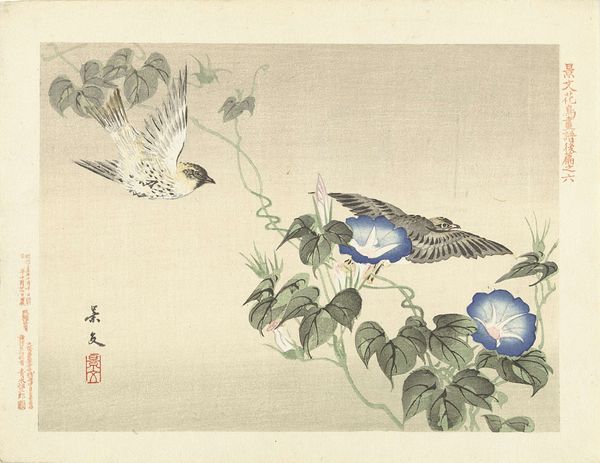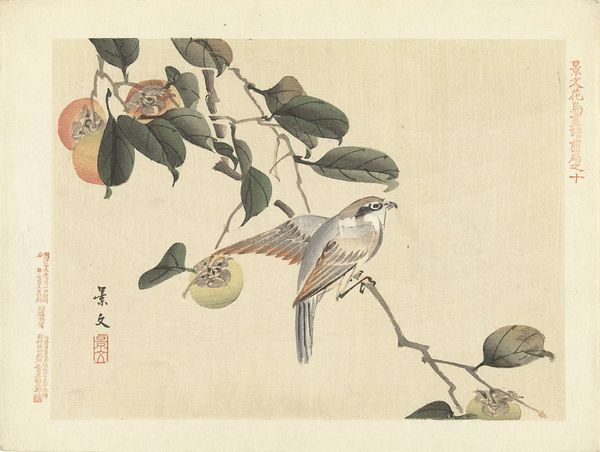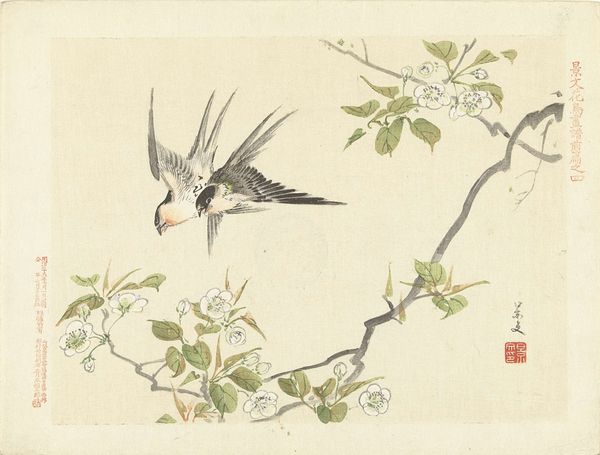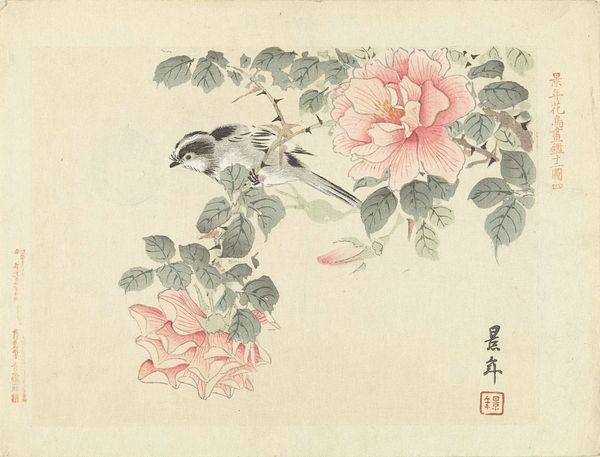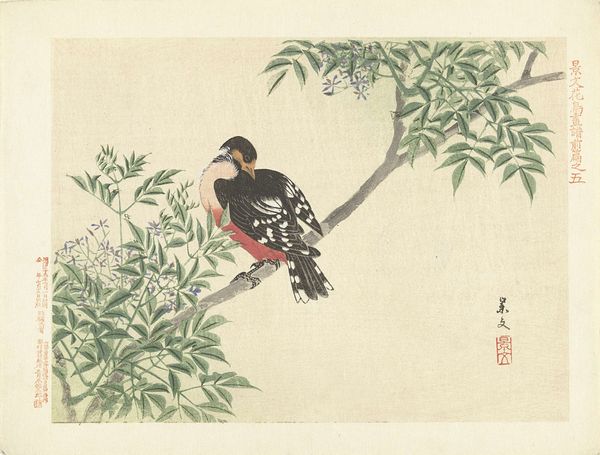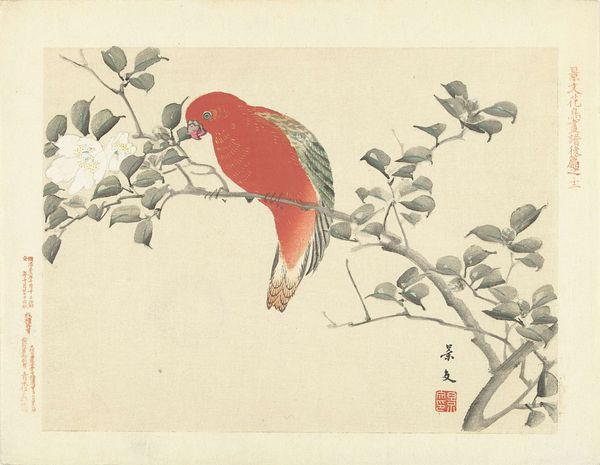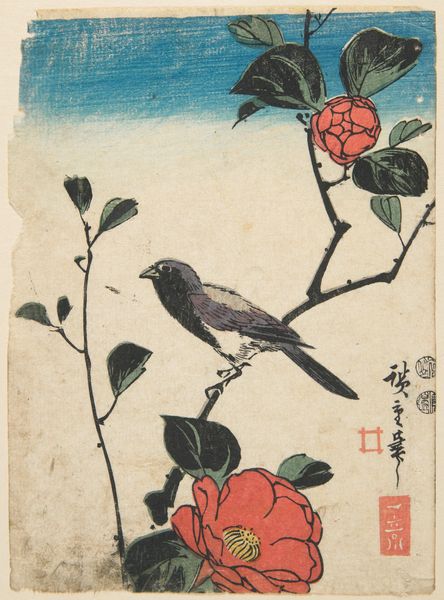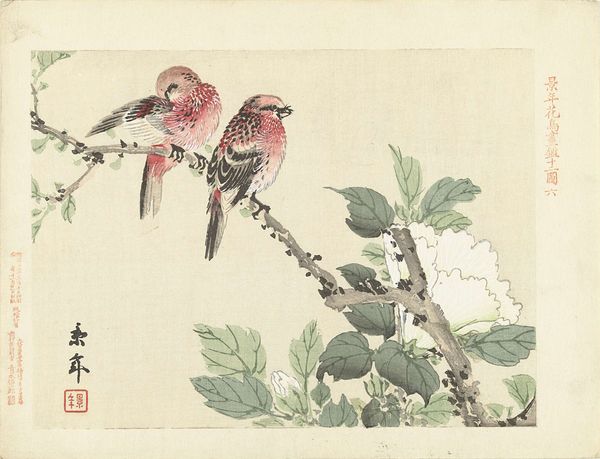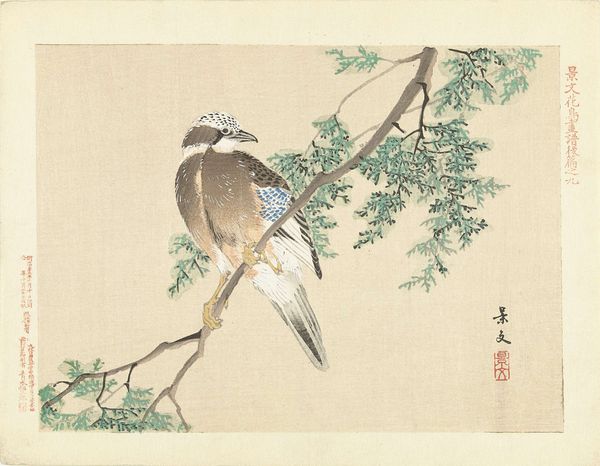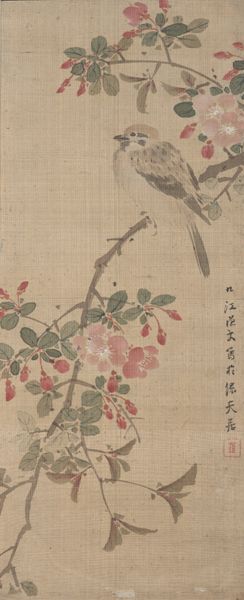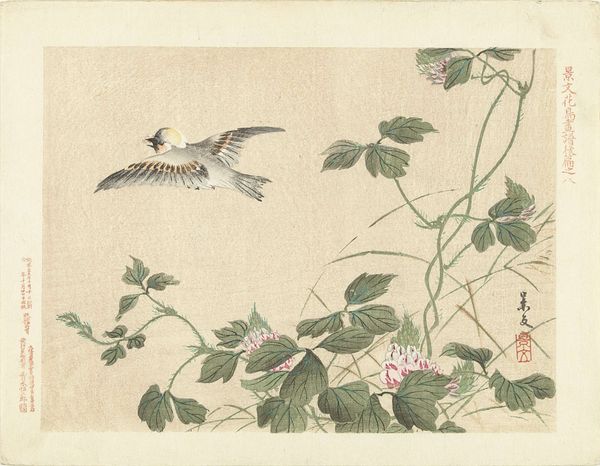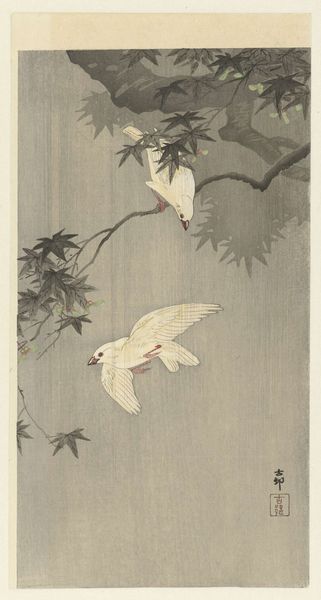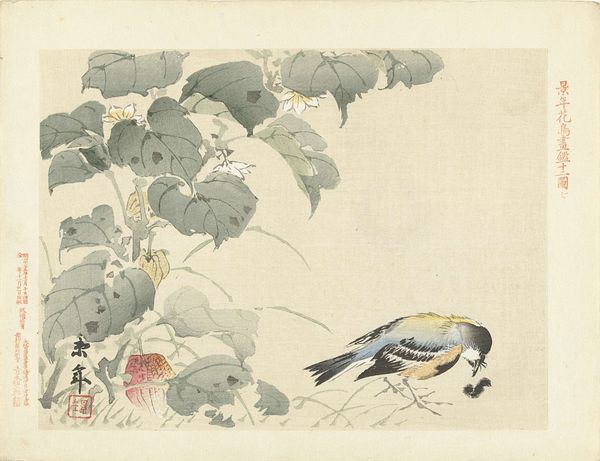
Dimensions: height 208 mm, width 270 mm
Copyright: Rijks Museum: Open Domain
Curator: Here we have "Witte kaketoe op cameliatak," or "White Cockatoo on Camellia Branch," a lovely watercolor from 1892 by Matsumura Keibun. What do you make of it? Editor: Well, it’s deceptively simple, isn't it? The limited palette gives it a subdued, almost ghostly presence. The cockatoo feels incredibly fragile, like a puff of smoke about to dissipate. Curator: The composition adheres to traditional ukiyo-e principles, emphasizing line and form. Note how the branch bisects the frame, drawing the eye diagonally across the aged paper. Birds and flowers were common motifs, symbolizing seasonal changes and auspicious moments. Editor: Absolutely. There’s a beautiful tension between the delicate rendering of the bird and the somewhat bolder depiction of the foliage. The slightly rough edges around the leaves create a wonderfully organic feel. I wonder, was the camellia chosen for any specific reason, or was it purely aesthetic? Curator: The camellia, in Japanese art, often represents resilience and longevity, blooming even in the colder months. This could be interpreted as a metaphor for the enduring spirit, a common theme during the Meiji era as Japan navigated rapid modernization and its relationship to tradition. It would have held significant symbolism to the intended Japanese audience at the time. Editor: That's fascinating. It almost feels like a quiet rebellion against the intensity of some other works from that period. A whisper of nature amid the clang of progress. And, personally, I just adore how the slight imperfections in the paper add so much character. Curator: Precisely. Its seeming simplicity belies the complexities of its historical and cultural moment, subtly urging a gentle pause. Editor: I'm leaving with the desire to sketch more birds. Something about its fragility calls to my heart.
Comments
No comments
Be the first to comment and join the conversation on the ultimate creative platform.

